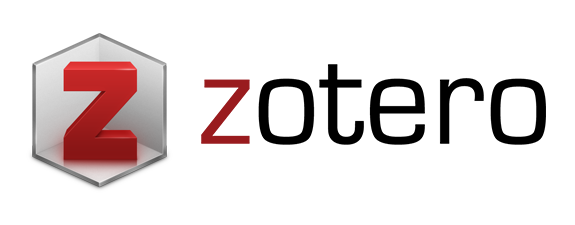Assessing the Effect of an Ethnomathematics Teaching Material on Students’ Understanding of Mathematics
Abstract
Keywords
Full Text:
PDFReferences
Abramovich, S., Grinshpan, A. Z., & Milligan, D. L. (2019). Teaching Mathematics through Concept Motivation and Action Learning. Education Research International, 2019, 1–13.
Adu, E., Assuah, C. K., & Asiedu-Addo, S. K. (2015). Students’ Errors in Solving Linear Equation Word Problems: Case Study of a Ghanaian Senior High School. African Journal of Educational Studies in Mathematics and Science, 11, 17–30.
Aygor, N., & Ozdag, H. (2012). Misconceptions in Linear Algebra: The Case of Undergraduate Students. Procedia – Social and Behavioral Sciences, 46, 2989–2994.
Az-Zahroh, S. F., At Thaariq, Z. Z., Surahman, E., Widyasari, C. M., Qolbi, M. S., & Diana, R. C. (2019). Developing Ethic Game (Ethnomathematics Game): The Instructional Media of Culture Mathematics with Tringo by Ki Hadjar Dewantara. Jurnal Pendidikan dan Pembelajaran, 26(2), 43–50.
Azwar, S. (2012). Reliabilitas dan Validitas. Yogyakarta: Pustaka Pelajar.
D’Ambrosio, U. (2016). An Overview of the History of Ethnomathematics. In Current and Future Perspectives of Ethnomathematics as a Program (pp. 5–10). Hamburg: Springer.
Gafoor, K. A., & Kurukkan, A. (2015). Why High School Students Feel Mathematics Difficult? An Exploration of Affective Beliefs. In Pedagogy of Teacher Education: Trends and Challenges (pp. 23–27). India: Farook Training College.
Hariati, A., & Septiadi, D. D. (2019). Analysis of Students’ Mistakes in Solving System of Linear Equation in Three Variables: A Case on HOTS Problems. International Journal on Teaching and Learning Mathematics, 2(1), 29–38.
Harlaar, N., Dale, P. S., Kovas, Y., & Petrill, S. A. (2012). Mathematics Is Differentially Related to Reading Comprehension and Word Decoding: Evidence From a Genetically Sensitive Design. American Psychological Association, 104(3), 622–635.
Jupri, A. (2016). Student Difficulties in Mathematizing Word Problems in Algebra. Eurasia Journal of Mathematics, Science & Technology Education, 12(9), 2481–2502.
Jupri, A., Drijvers, P., & Van den Heuvel-Panhuizen, M. (2014). Difficulties in Initial Algebra Learning in Indonesia. Mathematics Education Research, 26(4), 683–710.
Katsap, A., & Silverman, F. (2016). Ethnomathematics in Mathematics Curriculum via Ethnomathematical Word Problems. In A. Katsap & F. Silverman (Eds.), Ethnomathematics of Negev Bedouins’ Existence in Forms, Symbols and Geometric Patterns (pp. 289–304). Israel: Sense Publishers.
Khalid, M., & Embong, Z. (2019). Sources and Possible Causes of Errors and Misconceptions in Operations of Integers. International Electronic Journal of Mathematics Education, 15(2), 1–13.
Koca, F. (2016). Motivation to Learn and Teacher-Student Relationship. Journal of International Education and Leadership, 6(2), 1–20.
Lee, C. I. (2017). An Appropriate Prompts System Based on the Polya Method for Mathematical Problem-Solving. EURASIA Journal of Mathematics Science and Technology Education, 13(3), 893–910.
Mania, S., & Alam, S. (2021). Teachers’ Perception toward the Use of Ethnomathematics Approach in Teaching Math. International Journal of Education in Mathematics, Science, and Technology (IJEMST), 9(2), 282–298.
Mulwa, E. C. (2015). Difficulties Encountered by Students in the Learning and Usage of Mathematical Terminology: A Critical Literature Review. Journal of Education and Practice, 6(13), 27–37.
Noviyana, I. N., Rochmad, & Dewi, N. R. (2020). Student Mathematical Communication Ability Viewed from Self-Confidence in the ARIAS Model Nuanced Ethnomathematics. Unnes Journal of Mathematics Education Research, 9(1), 106–113.
Ojose, B. (2015). Students’ Misconceptions in Mathematics: Analysis of Remedies and What Research Says. Ohio Journal of School Mathematics, 72, 30–34.
Otten, M., Van den Heuvel-Panhuizen, M., & Veldhuis, M. (2019). The Balance Model for Teaching Linear Equations: A Systematic Literature Review. International Journal of STEM Education, 6(30). https://doi.org/https://doi.org/10.1186/s40594-019-0183-2
Palinussa, A. L. (2013). Students’ Critical Mathematical Thinking Skills and Character: Experiments for Junior High School Students Through Realistic Mathematics Education Culture-Based. Journal on Mathematics Education, 4(1), 75–94.
Plomp, T. (2013). Educational Design Research: An Introduction. In T. Plomp & N. Nieveen (Eds.), Educational Design Research (pp. 10–51). Netherland: SLO.
Powell, S. R., & Fuchs, L. S. (2018). Effective Word-Problem Instruction: Using Schemas to Facilitate Mathematical Reasoning. Teaching Exceptional Children, 51(1), 31–42.
Rossa, M., & Orey, D. C. (2011). Ethnomathematics: The Cultural Aspects of Mathematics. RevistaLatinoamericana de Ethnomatematica, 4(2), 32–54.
Setiyadi, D., Zaenuri, Z., & Mulyono, M. (2018). The Problem Based Learning Model with Ethnomathematics Nuance by Using Traditional Games to Improve Problem Solving Ability. Journal of Primary Education, 7(2), 176–186.
Tong, D. H., & Loc, N. P. (2017). Students’ Errors in Solving Mathematical Word Problems and Their Ability in Identifying Errors in Wrong Solutions. European Journal of Education Studies, 3(6), 226–241.
Wittek, L., & Habib, L. (2013). Quality Teaching and Learning as Practice Within Different Disciplinary Discourses. International Journal of Teaching and Learning in Higher Education, 25(3), 275–287.
Yanuarto, N. W. (2016). Teacher Awareness of Students’ Anxiety in Math Classroom: Teachers’ Treatment vs Students’ Anxiety. Journal of Education and Learning, 10(3), 235–243.
DOI: http://dx.doi.org/10.17977/um047v28i12021p010
Refbacks
- There are currently no refbacks.
Copyright (c) 2021 Linda Vitoria, Monawati Monawati, Fauzi Fauzi, Mislinawati Mislinawati

This work is licensed under a Creative Commons Attribution-ShareAlike 4.0 International License.
INDEXED BY |
TOOLS | PLAGIARISM CHECK | ARTICLE TEMPLATE |
| Research Article Non Research Article |

JPP (Jurnal Pendidikan dan Pembelajaran) is licensed under a Creative Commons Attribution-ShareAlike 4.0 International License












_2.png)
_.png)